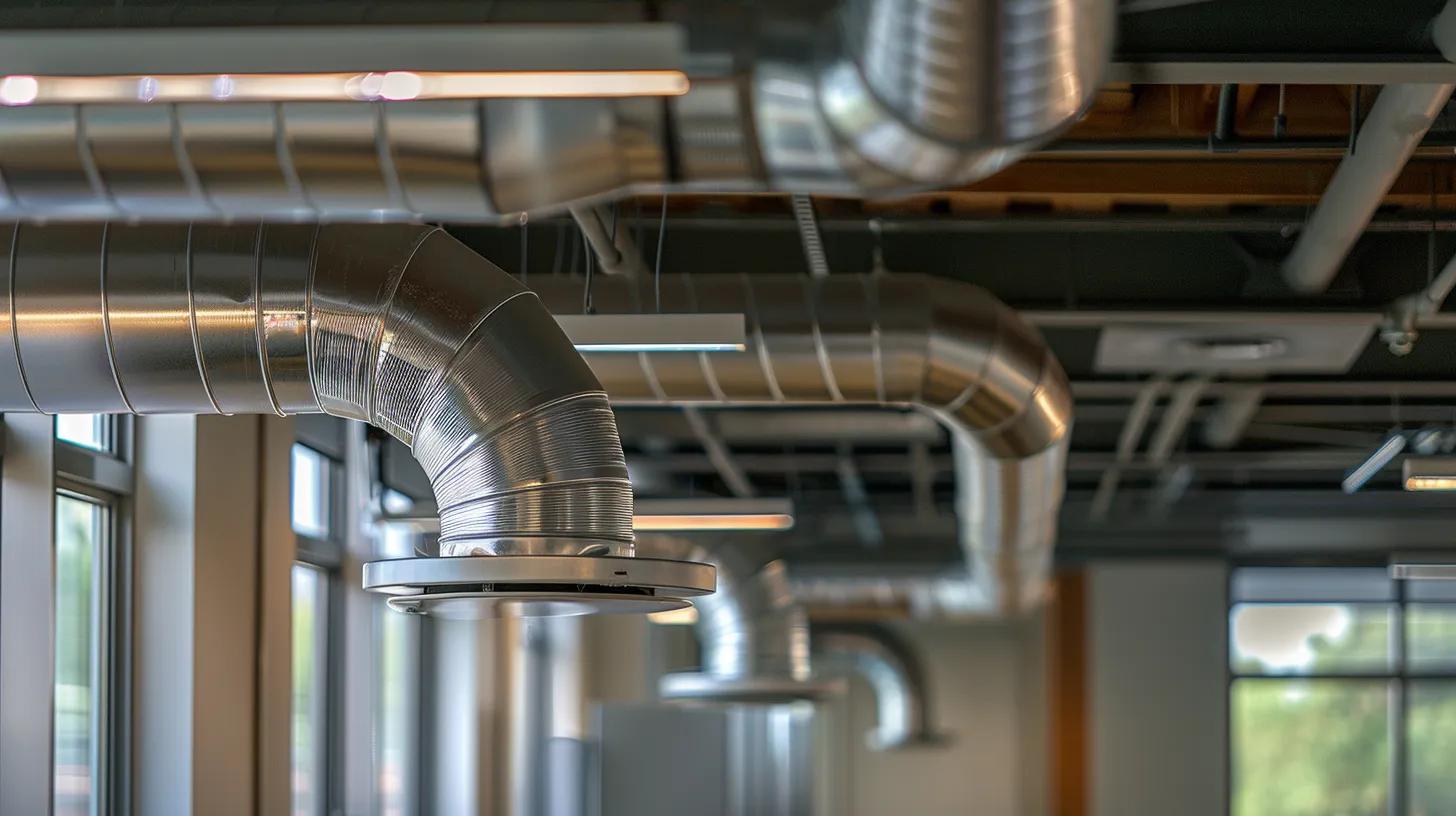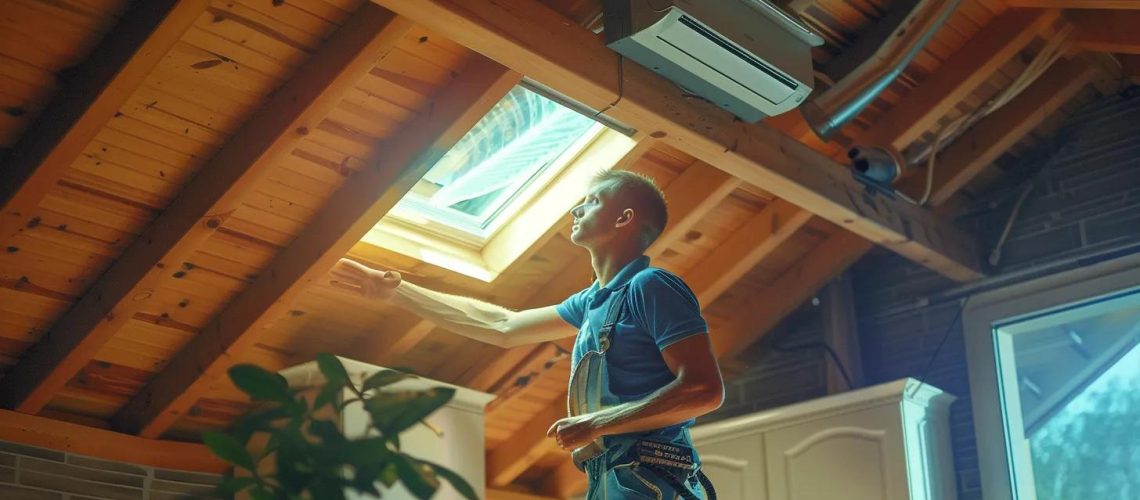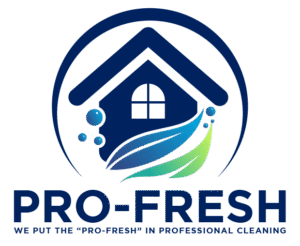
Air Duct Maintenance Tips for Optimal Home Comfort
A well-maintained air duct system is critical for indoor air quality, HVAC efficiency, and overall comfort. Neglected ducts can lead to dust accumulation, mold growth, reduced airflow, and higher energy consumption—making professional air duct cleaning in houston a wise investment. This article presents practical tips—from basic upkeep to advanced strategies—to ensure clean, efficient air ducts that protect your health, reduce energy bills, and extend equipment lifespan.
Key Takeaways
- Replace air filters regularly and keep vents clear to maintain airflow.
- Seal duct leaks and use high-MERV-rated filters to enhance indoor air quality.
- Clean ducts reduce strain on HVAC systems while lowering energy costs.
- Preventative measures against mold and pests protect ducts from long-term damage.
- Seasonal upkeep and professional services can keep your duct system efficient year-round.
Foundational Air Duct Maintenance Tips for Every Homeowner

Routine maintenance lays the groundwork for optimal HVAC performance and indoor air quality. Simple actions, performed regularly, can prevent costly repairs and health issues.
Consistently Replace Air Filters for Better Airflow
Changing air filters every one to three months is key to proper HVACairflow. Using filters with the correct Minimum Efficiency Reporting Value (MERV) helps keep debris from circulating. This not only extends the system’s life and improves energyefficiency but also reduces allergens.
Keep Vents and Registers Clean and Unobstructed
Clear vents and registers ensure even air distribution throughout the home. Regularly cleaning these areas—ideally once a month—ensures that furniture or debris do not hinder airflow, thereby maintaining comfort and system performance.
Visually Inspect Accessible Duct Sections Regularly
Inspecting accessible ducts every few months helps identify early signs of damage, blockages, or pest infestations. Early detection allows for prompt repairs before issues escalate, saving money and maintaining air quality.
Ensure the Area Around Your HVAC Unit Stays Clear
Keeping the space around your HVAC unit free of clutter and debris maximizes airflow and reduces the risk of overheating. A clear area prevents dust and moisture from interfering with the system’s operation.
Understand Your Home’s Ductwork Layout Basics
Familiarity with your duct system—through diagrams or professional advice—helps in targeted maintenance and troubleshooting. Knowing the layout ensures that any problem areas are quickly identified and remedied.
Advanced Air Duct Maintenance Tips for Improved Air Quality
Advanced practices further cleanse your ductwork, reducing allergens and pollutants for a healthier indoor environment.
Seal Minor Air Leaks in Exposed Ductwork Yourself
Identify and seal small leaks using foil tape or duct mastic. This simple measure improves energyefficiency by retaining conditioned air and prevents pollutants and dust from entering the system.
Clean Grilles and Diffusers to Reduce Dust Circulation
Regularly wipe down grilles and diffusers with a damp cloth or mild solution. Cleaning these components minimizes dust recirculation and helps maintain a higher quality of indoor air.
Consider Using Higher MERV-Rated Air Filters
High-MERV-rated filters trap smaller particles, including mold spores and allergens, more effectively than standard filters. Although they may increase HVAC workload slightly, selecting a balanced filter can improve air quality without compromising airflow.
Check and Clean Dryer Vents to Prevent Lint Buildup Nearby
Lint accumulation in dryer vents can pose fire risks and impact air quality. Cleaning dryer vents at least twice a year ensures that excess particulates do not transfer to nearby ducts and cause additional problems.
Identify Sources of Indoor Pollutants Affecting Ducts
Reduce pollutants like tobacco smoke, volatile organic compounds (VOCs), and off-gassing from new furniture by improving ventilation and isolating these areas. This helps prevent contaminants from being drawn into the duct system.
Air Duct Maintenance Tips to Boost HVACEfficiency and Comfort

A well-maintained duct system not only improves air quality but also enhances HVACefficiency and home comfort.
How Well-Maintained Ducts Lower Energy Consumption
Clean, unobstructed ducts lighten the load on your HVAC system. By preventing leaks and blockages, the system operates more efficiently, reducing energy use and lowering utility bills.
Ensure Balanced Airflow to All Rooms
Regular duct inspections help maintain uniform airflow, avoiding hot or cold spots. Balancing airflow across all rooms contributes to consistent heating or cooling and overall comfort.
Reduce Strain on Your HVAC System With Clean Ducts
When ducts are clean and free of debris, the compressor and other components face less strain. A smooth-running system is less likely to break down and has a longer operational life.
Address Ductwork Insulation for Temperature Stability
Good insulation minimizes energy loss by keeping warm air inside during winter and cool air during summer. Periodically check and replace insulation as needed to maintain temperature stability and efficiency.
Optimize Thermostat Performance Through Efficient Ducts
Consistent airflow improves thermostat readings and the overall performance of smart systems, which depend on accurate temperature measurements. This synergy enhances comfort and energy regulation throughout the home.
Critical Air Duct Maintenance Tips for Problem Prevention
Preventative maintenance helps avoid major issues such as mold growth, pest infestations, and costly repairs.
Recognize Early Warning Signs of Duct Issues
Listen for unusual noises, monitor airflow inconsistencies, and watch for increases in energy bills. These early indicators allow you to address problems before they develop into serious issues.
Prevent Mold and Mildew Growth in Your Duct System
Moisture can lead to mold and mildew in ducts. Regular cleaning, proper humidity control, and sealing leaks are vital steps. Using non-toxic antimicrobial solutions during cleaning can further protect duct surfaces.
Safeguard Ducts From Pest Infestations
Inspect ducts for entry points and seal any gaps to prevent pests. Routine cleaning combined with safe pest control measures helps ensure that rodents and insects do not compromise your duct system.
Avoid Practices That Damage Ductwork
Follow manufacturer guidelines when cleaning ducts. Avoid harsh chemicals or excessive force that might damage duct liners or seals. Gentle methods help preserve the integrity of your ducts.
Understand How Moisture Control Protects Ducts
Keeping ducts dry through proper ventilation is crucial. Monitoring humidity and addressing condensation promptly can prevent rust, mold, and long-term deterioration.
Seasonal Air Duct Maintenance Tips for Year-Round Comfort

Seasonal tasks help prepare your duct system for varying weather conditions, ensuring consistent performance throughout the year.
Prepare Your Air Ducts for Summer Cooling Demands
Before summer, clean ducts to remove dust and debris that can restrict airflow. Check for leaks or insulation issues that might hinder cooling efficiency during peak usage.
Winterize Your Duct System for Efficient Heating
In winter, inspect duct insulation and seal any gaps to minimize heat loss. Ensuring ducts are free of obstructions allows warm air to circulate effectively for a comfortable home environment.
Springtime Duct Checks for Allergy Season Readiness
Spring cleaning is essential to combat pollen and allergens. A thorough ductcleaning in late winter or early spring helps improve indoor air quality and reduce allergy triggers.
Autumn Air Duct Preparations Before Heavy Use
As temperatures drop, inspect and clean ducts to prevent issues like mold growth or dust buildup during prolonged HVAC use. This proactive approach supports efficient heating throughout the season.
Adjust Duct Maintenance for Humid or Dry Climates
Tailor your maintenance efforts to local climate needs. In humid areas, focus on moisture control and mold prevention; in dry areas, prioritize dust removal to keep the system working optimally.
Tips for Engaging Professional Air Duct Maintenance Services
Some maintenance tasks are best handled by professionals, especially when deep cleaning or complex repairs are needed.
Identify When Professional Duct Cleaning Becomes Necessary
If you notice persistent musty odors, visible mold, heavy dust buildup, or unexplained energy spikes, it may be time to consult a professional. Deep cleaning and advanced repairs require the expertise and equipment professionals offer.
Select a Qualified Air Duct Service Company
Choose a company with verifiable certifications, positive reviews, and a proven track record. A reputable service provider will conduct comprehensive inspections and use advanced techniques to ensure your ducts are thoroughly cleaned.
Understand the Scope of Professional Duct Inspections
Professional inspections can include advanced imaging or microbial testing to spot contaminants and leaks. Detailed reports from experts help you understand current issues and plan future maintenance.
Inquire About Advanced Duct Sealing Techniques
Ask about solutions like aerosol sealing, which can permanently fix leaks and enhance energyefficiency. These methods improve airflow and save money in the long run.
Prepare Your Home for a Professional Duct Service Visit
Before a technician arrives, clear the area around vents and duct access points. Removing obstacles and securing pets or fragile items helps ensure a smooth, efficient service visit.
Table: Air Duct Maintenance Comparison Table
Below is a comparison of regular DIY maintenance versus professional services.
| Maintenance Aspect | Regular DIY Maintenance | Professional Maintenance |
|---|---|---|
| Frequency | Monthly or seasonal cleaning and inspections | Annual deep cleaning and comprehensive checks |
| Cost | Cost-effective, mostly time and supplies | Higher upfront cost but long-term savings |
| Cleaning Techniques | Basic dusting, filter replacement, sealant work | Advanced imaging, microbial testing, aerosol sealing |
| Impact on Energy Efficiency | Moderate improvements | Significant boost to HVAC performance and savings |
| Contaminant Removal | Removes surface dust and allergens | Thorough removal of mold, bacteria, and pollutants |
Frequently Asked Questions
Q: How often should I replace my air filters?
A: Replace air filters every one to three months, depending on usage and environmental conditions.
Q: Can I seal air ductleaks myself?
A: Yes, minor leaks can be sealed with foil tape or duct mastic. Larger issues may require professional help.
Q: What benefits does professional duct cleaningoffer over DIY methods?
A: Professionals use advanced techniques to remove deep-seated contaminants, seal leaks, and extend HVAC lifespan for improved efficiency and health.
Q: How does seasonal maintenance impact my HVACsystem?
A: Seasonal checks prepare ducts for changing demands, reducing energy costs and maintaining system resilience.
Q: Are higher MERV-rated filters safe for all HVACsystems?
A: While they improve air quality, ensure higher MERV filters are compatible with your system. Consult your HVAC provider if unsure.
Final Thoughts
Regular and proactive air duct maintenance is key to a healthy, efficient home environment. By combining basic cleaning routines with advanced techniques and professional services when necessary, you can improve indoor air quality, reduce energy costs, and extend the life of your HVAC system. Stay consistent with maintenance and adjust practices seasonally to enjoy a comfortable, efficient, and safer home throughout the year.







